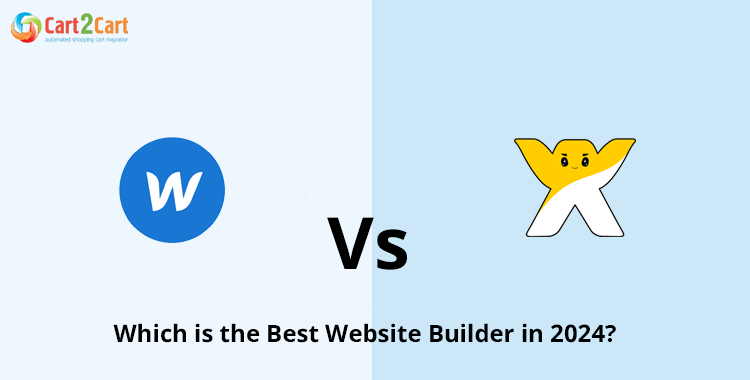
When it comes to creating a website, two names often come up in the conversation: Webflow and Wix. Both are popular website builders that allow users to design and launch websites without the need for coding skills. However, each platform has its own strengths, weaknesses, and unique features. In this detailed comparison of Webflow vs Wix, we’ll take a deep dive into the functionalities, pricing models, customization options, ease of use, and other factors to help you decide which platform is best suited for your needs.
Understanding Webflow and Wix: Overview
Before we dive into the comparison, let’s take a brief look at what Wix and Webflow are, and who their ideal users are. In 2025, both platforms have evolved significantly, offering powerful tools for website creation. Whether you decide to use Wix for its ease of use or use Webflow for more advanced design control, both have their strengths. Webflow, for instance, allows for pixel-perfect design, often down to the centimeter level, while Wix is known for its user-friendly interface, making it a popular choice for beginners.What is Webflow?
Webflow is a web design platform aimed at professional designers and developers. It’s known for its advanced design capabilities, which allow users to create fully customizable websites with detailed control over elements like animations, interactions, and layouts. Webflow is built for users who want to create high-quality, unique websites without needing to write custom code (although code customization is also possible). Webflow offers a mix of drag-and-drop simplicity and the ability to fine-tune your site’s code for a completely customized look and feel. While it’s an excellent choice for professional web designers and developers, it may have a steep learning curve for beginners.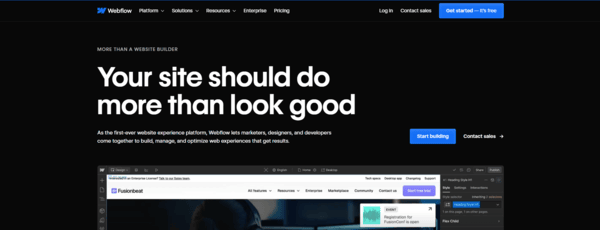
What is Wix?
Wix, on the other hand, is a user-friendly, drag-and-drop website builder that aims to make website creation accessible to anyone, regardless of their technical expertise. Wix allows users to create websites with ease by providing a wide range of pre-built templates, customizable design elements, and a simple drag-and-drop editor. Wix is known for its simplicity and ease of use, making it an excellent choice for beginners, small businesses, freelancers, and anyone who wants to build a website quickly and without any coding skills. While Wix is highly accessible, it doesn't offer the same level of design flexibility or customization as Webflow.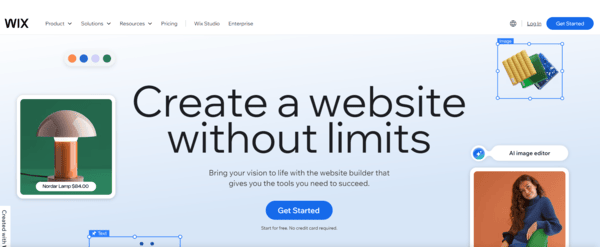
Webflow vs Wix: Ease of Use
When choosing between Webflow vs Wix, one of the most important factors to consider is how easy the platform is to use.Wix: Simplicity at Its Best
Wix is widely praised for its user-friendly interface. The drag-and-drop editor allows you to create websites by simply dragging elements (such as text boxes, images, and buttons) into place. There’s no need for coding knowledge or a steep learning curve. Even if you’ve never built a website before, you can quickly and easily create a functional and aesthetically pleasing site on Wix. One of the most impressive features of Wix is its Wix ADI (Artificial Design Intelligence) tool. This tool can automatically create a website for you based on your preferences and business type. If you’re looking to build a website in minutes with minimal effort, Wix’s ADI feature is a great choice. However, while Wix’s simplicity is a major advantage for beginners, it also comes with limitations in terms of design flexibility. If you want to customize your site in greater detail, you may find Wix’s drag-and-drop editor somewhat restrictive.Webflow: Power and Control, But at a Cost
Webflow takes a different approach. While it does offer a drag-and-drop interface, it is far more powerful and complex than Wix’s. Webflow allows users to design websites with pixel-perfect precision, giving you complete control over every aspect of the site’s design. It’s an excellent choice for web designers and developers who need full creative freedom. Webflow’s interface can be overwhelming for beginners. There’s a learning curve involved, as the platform offers more advanced features than Wix. You’ll have to invest more time in learning how to use Webflow’s powerful design tools, but once you’re familiar with the platform, the creative possibilities are endless. Webflow also gives users the ability to write custom code, allowing for even more advanced customizations. This makes Webflow ideal for professional designers and developers who want to create fully unique websites with custom features.
Key Takeaway
- Wix: Best for beginners or those who want a simple, quick setup. No coding knowledge required, and the drag-and-drop editor makes it easy to build websites quickly.
- Wix ADI: Automatically generates a website based on your preferences, making it ideal for those with minimal effort and time to invest.
- Webflow: Best for professional designers and developers who need full control over the design. Offers pixel-perfect precision and advanced customization options.
- Webflow’s Learning Curve: More complex than Wix, requiring a greater time investment to master, but provides greater creative freedom.
- Customization: Webflow supports custom coding, making it the better option for those who need unique and tailored features on their website.
Webflow vs Wix: Design Flexibility
One of the most significant differences between Webflow vs Wix is the level of design flexibility each platform offers.Webflow: Total Creative Freedom
Webflow is known for its design flexibility. It provides a highly customizable platform that allows users to control almost every aspect of their website’s design. Whether you’re designing a complex layout, adding advanced animations, or creating unique interactions, Webflow has the tools to help you achieve your vision. Webflow’s interface is designed to give users the power of a professional web design tool without the need for coding knowledge. It allows for CSS grid layouts, custom typography, and responsive design, giving you full control over how your website looks across different devices. If you’re a designer or developer looking to create a highly customized website with advanced features, Webflow is the better option. Its design tools are robust and versatile, making it suitable for creating everything from simple landing pages to complex, interactive websites.Wix: Pre-Designed Templates with Basic Customization
While Wix is much easier to use, its design flexibility is not as robust as Webflow’s. Wix provides hundreds of templates for different types of websites, such as blogs, portfolios, eCommerce sites, and more. These templates are fully customizable, but the level of customization is limited compared to Webflow. You can move elements around on the page, change colors, and add content, but you won’t have the same level of fine-tuned control over the design. Wix’s drag-and-drop editor is easy to use, but it doesn’t offer the advanced design capabilities that Webflow does.Key Takeaway
- Wix: Ideal for simple websites with pre-designed templates. Great for users who want to quickly build a site with basic customization options.
- Webflow: Best for advanced, custom-designed websites that require full control over design, animations, and interactions. Suitable for designers and developers looking for flexibility and creativity.
Webflow vs Wix: Pricing
Pricing is always an important factor to consider when choosing a website builder. Both Webflow vs Wix offer free plans, but the paid plans vary in features and pricing.| Feature | Webflow | Wix |
|---|---|---|
| Free Plan | Available (limited features) | Available (limited features) |
| Basic Plan | Starts at $14/month | Starts at $16/month |
| Premium Plan | Starts at $23/month | Starts at $24/month |
| Ecommerce Plan | Starts at $29/month | Starts at $27/month |
| Enterprise Plan | Custom pricing (for larger sites) | Custom pricing (for larger sites) |
Webflow Pricing
Webflow offers multiple pricing tiers, starting at $14 per month for the basic plan. The premium plans, which offer more customization options and eCommerce functionality, start at $23 per month and can go up to $35 per month for larger sites with more advanced features. Webflow’s pricing reflects its advanced design tools and customization options. If you want to create a truly unique website with powerful features, you may need to invest in the higher-tier plans.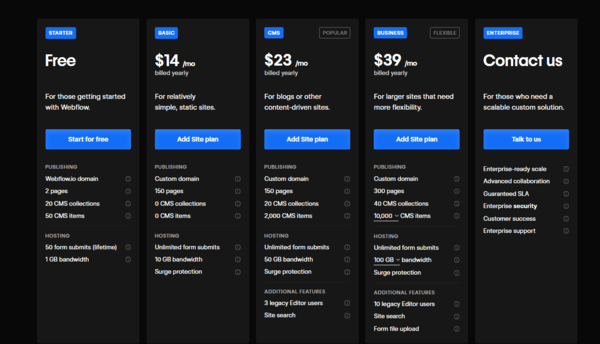
Wix Pricing
Wix’s pricing is slightly more affordable than Webflow’s, starting at $16 per month for the basic plan. The premium plans, which provide additional features and eCommerce functionality, start at $24 per month. Wix also offers enterprise-level pricing for larger sites or businesses that require more advanced features.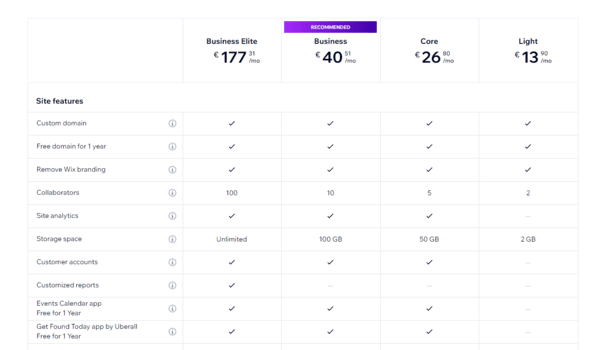
Key Takeaway
- Wix: More affordable starting at $16 per month, ideal for straightforward websites with basic features.
- Webflow: Offers advanced design tools and customization, starting at $14 per month, but may require a higher-tier plan (starting at $23 per month) for advanced features and eCommerce functionality.
- Customization: Webflow provides more design flexibility and advanced features, making it a great choice if you're looking for more control over your website's design.
- Budget: If keeping costs low is a priority, Wix is the more budget-friendly option for creating a simple site.
Webflow vs Wix: SEO Capabilities
Search engine optimization (SEO) is crucial for ensuring that your website ranks well on Google and other search engines. In this section, we’ll compare the SEO capabilities of Webflow vs Wix.
Webflow: Advanced SEO Features
Webflow excels in terms of SEO capabilities. It offers full control over SEO elements, including meta tags, alt text for images, URL structure, and much more. Webflow also provides powerful tools to ensure that your site is optimized for speed and performance, which are key factors for SEO. Additionally, Webflow allows you to export your website’s code if you want to make further SEO adjustments or integrate third-party tools. Webflow’s ability to integrate with Google Analytics and other SEO tools gives you detailed insights into your website’s performance and rankings.Wix: Improved SEO Features
Wix has made significant strides in improving its SEO tools. While it doesn’t offer the same level of control as Webflow, Wix’s SEO Wizard can guide you through optimizing your site for search engines. Wix also automatically generates sitemaps, which helps search engines crawl your site more efficiently. Wix’s SEO features are suitable for most small business websites and blogs. However, if you’re looking for more advanced SEO capabilities, Webflow offers more customization options.Key Takeaway
- Webflow provides advanced SEO capabilities with full control over meta tags, alt text, URL structure, and other important elements.
- Webflow’s performance optimization tools ensure your site is fast, which is crucial for SEO.
- You can export your website’s code from Webflow for further SEO adjustments or third-party integrations.
- Wix offers a user-friendly SEO Wizard to guide you through basic optimizations, making it suitable for beginners.
- Wix automatically generates sitemaps, helping search engines crawl your site more effectively.
- For more advanced SEO needs and complete control, Webflow is the better option, while Wix is ideal for users seeking simpler SEO features.
Webflow vs Wix: Customer Support
Customer support is an important factor to consider when choosing a website builder. In this section, we’ll compare Webflow vs Wix in terms of support.Wix Customer Support
Wix provides robust customer support through various channels, including live chat, phone support, and a comprehensive knowledge base. Wix’s support is easy to access and available 24/7, making it ideal for users who need quick help while building their websites. In addition to direct support, Wix has an active community forum where users can ask questions, share tips, and troubleshoot issues. Wix’s support is highly accessible, and its knowledge base is filled with helpful tutorials and articles.Webflow Customer Support
Webflow also offers customer support, but it’s more targeted toward experienced users. While Webflow’s support team is knowledgeable and responsive, beginners may find the platform’s resources less user-friendly. Webflow’s support options include email, live chat, and a large community of users who share tips and solutions in forums. If you’re looking for a more hands-on, personalized approach to support, Webflow’s customer service team is top-notch. However, beginners may find Wix’s support system more approachable.Key Takeaway
Both platforms offer solid customer support:- Wix: More beginner-friendly with easily accessible live chat and phone support.
- Webflow: Better suited to advanced users and designers who need specialized help.
- Wix Support: Available 24/7, with a comprehensive knowledge base, active community forum, and responsive customer service.
- Webflow Support: More targeted to experienced users, with email, live chat, and a large community forum.


